QEII Botanic Park
by Anne Evans
Unlike some of the Caribbean Islands that have ties to the British Empire, The Cayman Islands (a British Overseas Territory) largely appreciate and celebrate their long and ongoing relationship with Great Britain.
I am not a historian. However, from my limited research, perhaps this positive and ongoing relationship has something to do with the Islands’ discovery.
The Cayman Islands were first discovered by Christopher Columbus on May 10, 1503. He named the Islands Las Tortugas after the numerous sea turtles seen swimming in the surrounding waters. At the time, there were no native human inhabitants.
The British were the first to truly inhabit the Islands, and there were no indigenous people that were taken advantage of as part of their inhabitation. I admit that I am a “Royalist” – because of what I have observed as The British Monarchy’s support of these Islands, the current King’s respect for the British Overseas Territories, and most certainly for Queen Eliazbeth II who I hold in very high regard.
Grand Cayman Island’s East End
So now we have leased a car – enabling us to explore the remote areas of Grand Cayman Island not so amenable to visiting via Public Transportation. Of course, you might be able to arrive at some of these remote areas by Public Transport, however you might never return.
Today, we fulfilled an adventure I have so long waited to experience – we drove to and visited the Queen Elizabeth II Botanic Garden in East End (Queen Elizabeth II Royal Botanic Park).
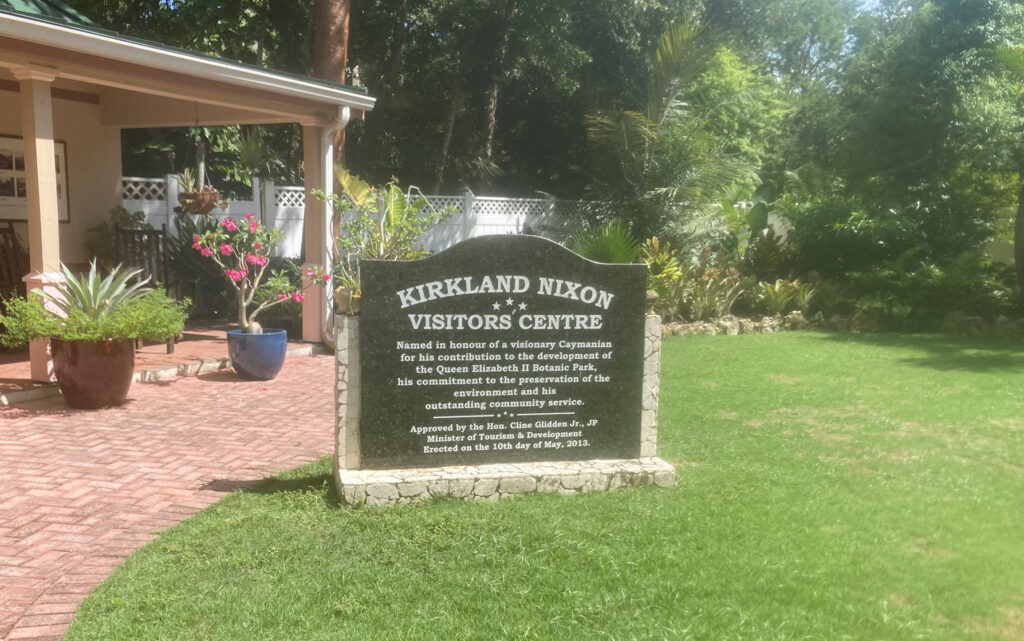
The East End is a rural paradise, with its beauty now threatened by exponential increases in human population and motorized vehicle traffic. My first opportunity to experience this area came unexpectedly. I first needed to visit as an outpatient, and then to be hospitalized at Health City – a modern Hospital located in this area. Not a bad place to visit or be, even though I was hospitalized for 10 days as the result of an ear infection that went berserk!
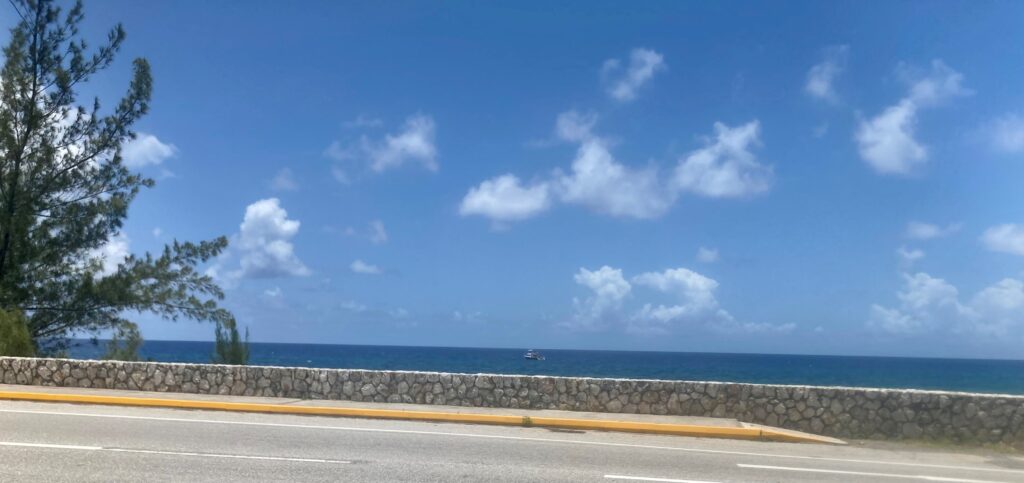
Rick and I did our first exploration of this more remote end of Grand Cayman when I was still under hospital care. One Sunday afternoon, he took me on this wonderful drive to the north-central and then far east parts of this region of the Island. Absolutely stunning views abound along the rural roads of lush foliage, with periodic glimpses of the ocean the road bordered. It was a totally different experience than the George Town Tourist Port where the Cruise Ship passengers embark onto the Island or are walking down Seven Mile Beach (the latter being “The Destination” place for stay over Tourists).
QEII Botanic Park on Grand Cayman Island
The QEII Botanic Park is located in the relatively central portion of East End (Eastern_Districts_Grand_Cayman_Map_from_Explore_Cayman). I had a singular objective during this first of many visits-to-follow to the Park – find a Blue Iguana, an endangered species whose only home is Grand Cayman.
The Park’s “Blue Iguana Habitat” is the Centre for The National Trust’s Blue Iguana Conservation Program and only recently has it become available for tour as part of a visit to the QEII Botanical Park (Blue Iguana Conservation and QEII Botanic Park Offer a Joint Ticket and One Great Experience | Queen Elizabeth II Royal Botanic Park.)
There are also “Blue Iguana Warden Experience Tours” — a half day experience that focuses entirely on “what it takes to conserve this species”. Two decades ago, this species was near extinction. These Iguanas now both roam freely on the grounds of this Park as well as are housed within the grounds’ rehabilitation facilities. The day of our visit, they were EVERYWHERE!
For What it’s Worth . . . in our former home in Southwest Utah, my mission had always been to find a Gila Monster in the wild. Rick and I went on many a hike in search of one but failed. However, I was instrumental in having it named as the Utah State Reptile.
I have had a life-long fascination with reptiles and amphibians. If I hadn’t been accepted into Veterinary School, my “back up” Plan B was to become a Herpetologist.
After I finished Veterinary School and became a Veterinary Dermatologist, my “back-up” Plan C was to make baking my focus. And here at 66 years of age, my Plan C – the baking fetish — has become my Plan A. Of course, my Plan B has remained my lifelong fascination.
On our first marvelous afternoon at the QEII Botanic Park . . .
First Stop was the Blue Iguana Habitat. Pretty amazing enclosure. Iguanas, in need of rehabilitation and special care, were individually housed in “pens” — with the intent to nurse them back to health and then be released into the wild – or enable them to live safely in retirement.
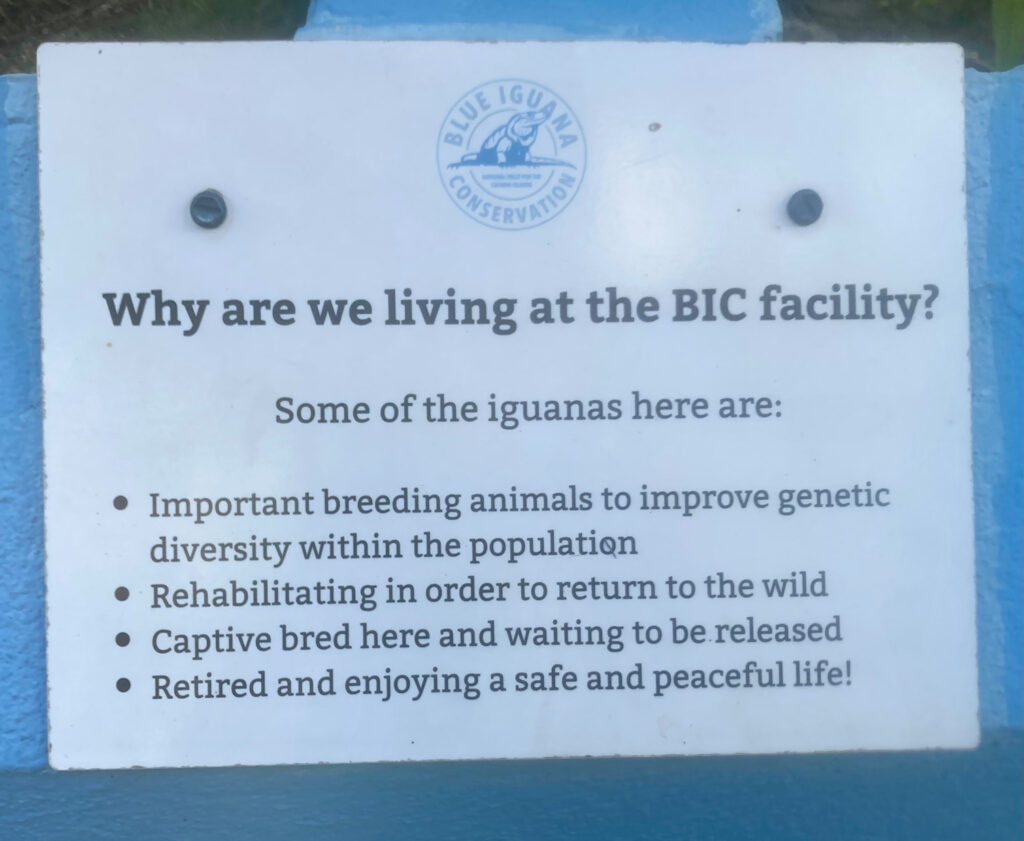
This Blue Iguana Habitat is unbelievable, and the term “pens” does not do it justice. Each Iguana in need of special care is given its own private and expansive (roughly 10-15 sq ft) space that includes an overgrowth of native fauna and swamp. Each pen is surrounded by a Caribbean blue stone wall, but is otherwise open to the fresh air, fresh food, and fresh water.
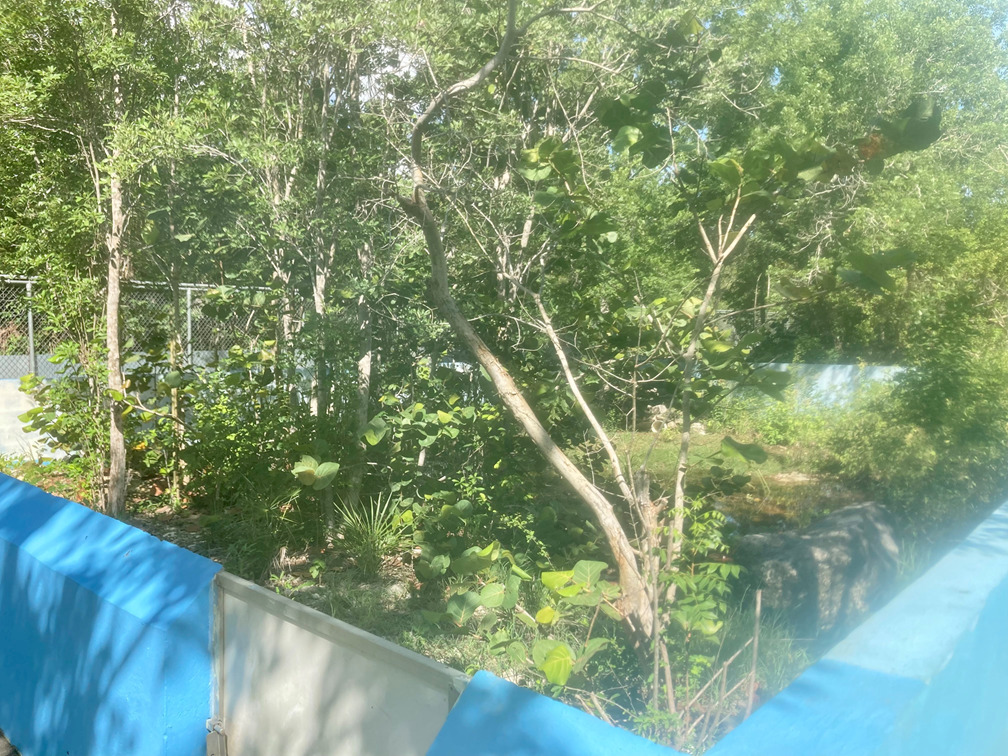
Each Iguana has a name plate which also names its Sponsor that has monetarily supported its special care.
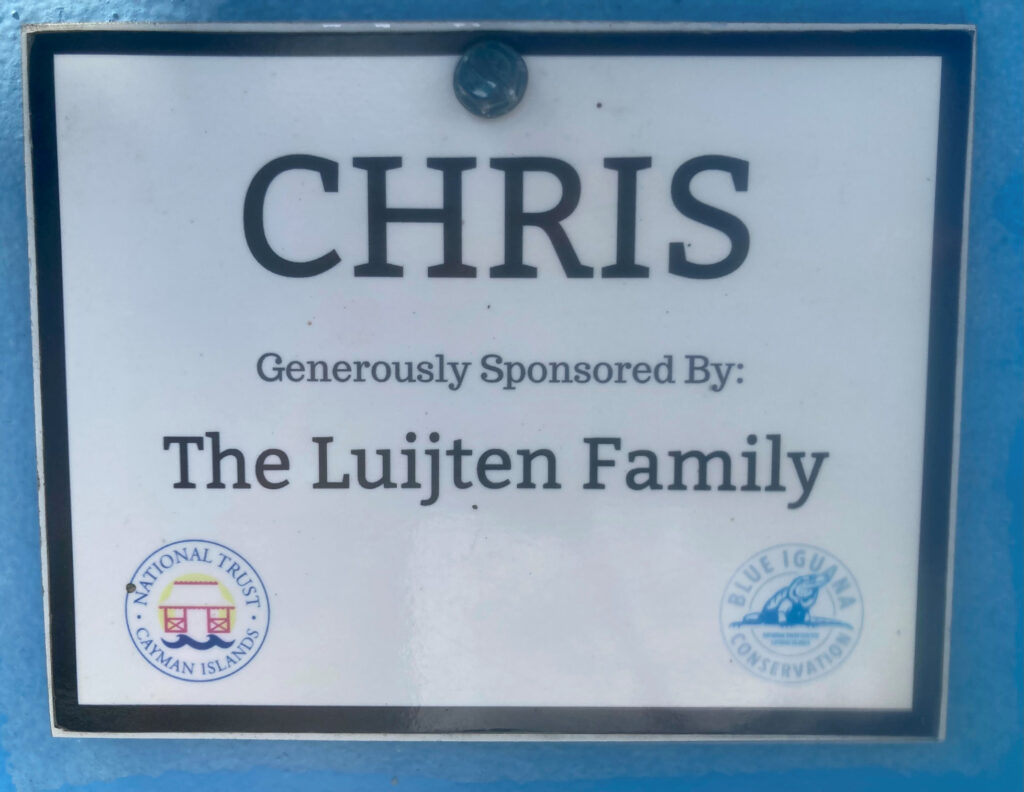
Then we moved on to the multitude of Gardens
https://www.botanic-park.ky/things-to see/?doing_wp_cron=1693009491.4336290359497070312500/
I found “The Heritage Garden” most fascinating of the additional gardens. However, if you have active children, they will likely find the “Children’s Garden Development” far more entertaining.
The Heritage Garden includes a traditional old Cayman house that had been relocated from its original location on East End and restored to now reside at this site in QEII Botanic Park – surrounded by a traditional home garden. As we walked through and around it, Rick commented to me “this is claustrophobic”. Small indeed, with very low ceilings. The kitchen was in a separate unattached building, so as to avoid overheating the main living space – and not destroy the living space should it cause fire. Although I am indeed claustrophobic and would not enjoy living here, my main concern was how could this home ever survive a hurricane, let alone protect its inhabitants!
Conclusions Regarding Our East End and QEII Botanic Garden Stay Day Vacation
- This is a true Cayman Island Treasure and so worthy of supporting should you be a local resident, or worthy of your visit if you are a tourist with an interest in Cayman Culture and Heritage.
- If you are a tourist, be kind and express with sincerity your appreciation to those that staff this Park for your experience. Whether or not it “meets your expectations”, this Park absolutely represents an important piece of this Island’s Cultural, Environmental and Endangered Species Heritage.
- Take plenty of Mosquito/Bug Repellent and repeatedly apply it, otherwise your visit will be rather unpleasant.
Next Stay-Cation Destination: Rum Point – North West (sort of East End and a rather isolated aspect of this marvelous island).


Mr. Hal is in charge of tours!
I love your comments and am inspired to go visit the botanical park! I have connections there! Mr. Hal who is in charge of tours there is a good friend, and, I have yet to go past the entrance,( always so busy when we go )!
Now I will make a point to go enjoy❤️
Your blog is wonderful!
Joyce 😘